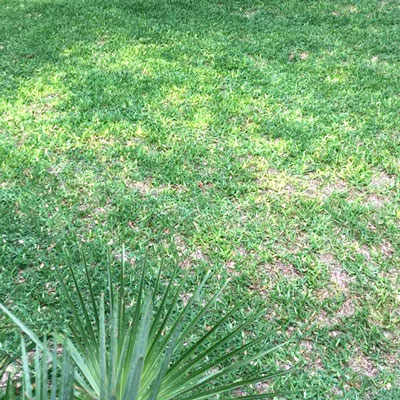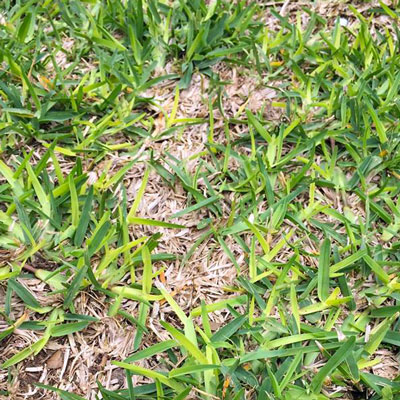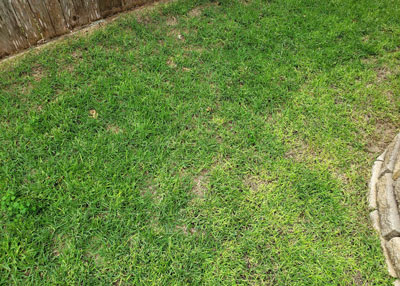Question of the Week – Number 3: March 26, 2020
“How can I tell if my St. Augustine has TARR? It looks so bad right now.”
Take all root rot was introduced to me about 25 years ago by Dr. Phil Colbaugh, research plant pathologist with the Texas Agricultural Experiment Station of Texas A&M.
As I thought about how to tell the TARR story, I decided bullet points will do the best job.

Shortcourse in Take All Root Rot (TARR)…
• Often called “Take All Patch.”
• Primarily appears in areas with alkaline soils, therefore along and west of I-35.
• Active in spring months, especially March, April and May. NOT active in heat of the summer.
• Most common in St. Augustine, but also attacks zoysias and other types of turfgrasses.
• Grass is lethargic and yellowed, slow to green up after winter.

• Discoloration appears in irregular patches across the lawn. Most noticeable when viewed from the side of the yard.
• When diseased runners are pulled on, they come loose from the soil with little resistance. Their roots are shortened and dark.
• You can often see the fungal strands on the grass with a hand lens or low-power magnification.
• Damage resembles that done by white grub worms, but when you dig searching for grubs you find few if any.

The old recommendation, then the new…
• From the mid-1990s until 2018 we were advised to apply a 1-inch layer of brown sphagnum peat moss across affected areas of turf. The peat would put a highly acidic layer in the root zone, and that would suppress the development of the TARR fungus. However, that treatment was cumbersome and expensive. It also merely suppressed the disease – it did not kill it.
• In 2019 a consumer recommendation of application of Azoxystrobin fungicide was made by university plant pathologists. Reports of excellent results poured in. That treatment has proven to be more effective and for a longer period of time. Your local hardware store or nursery should be able to help you find just what you need.
